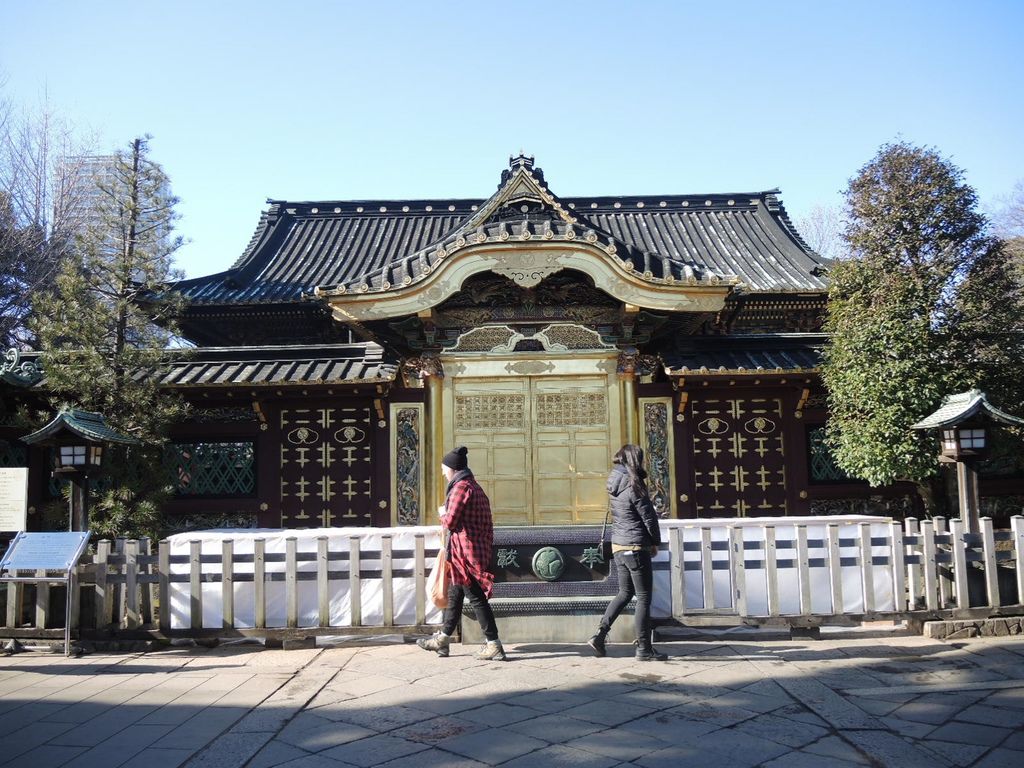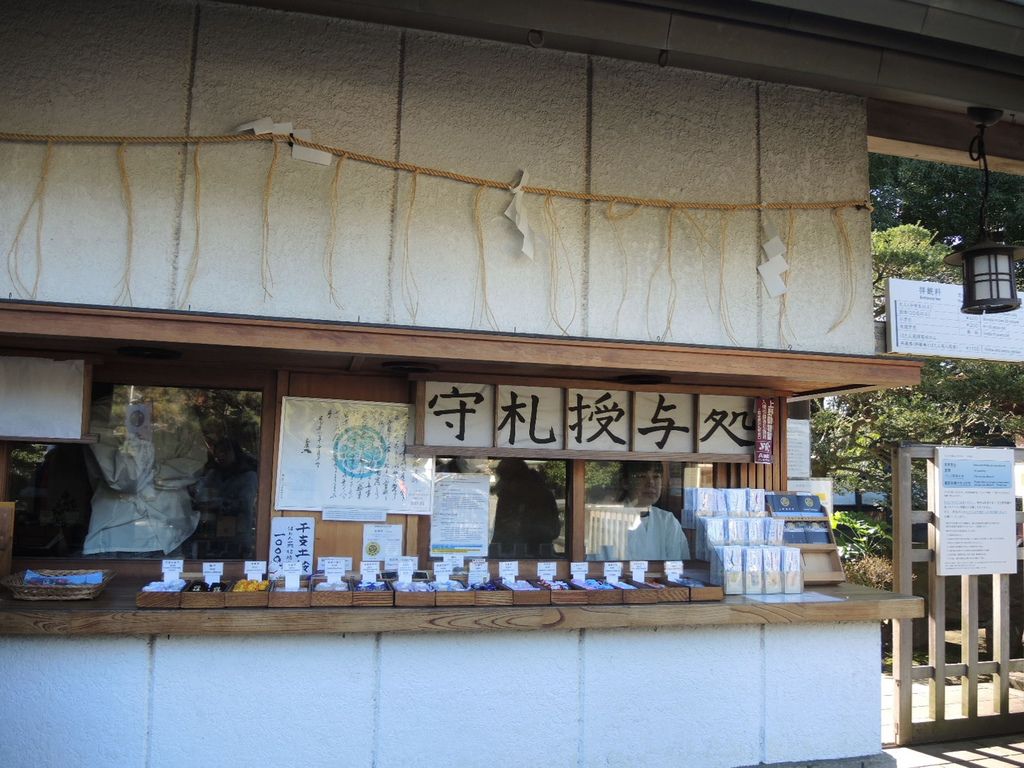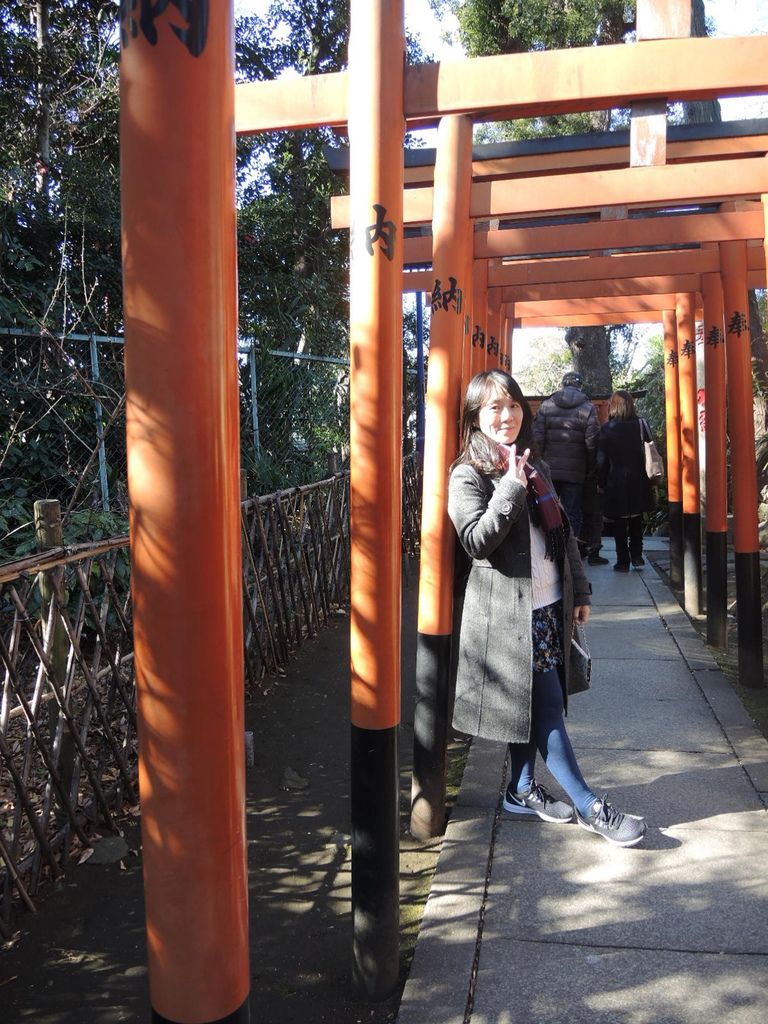宮寺知識一二三
淨手 拜拜 報哩哉
難道這是我耳聽八方, 反應靈敏的緣故嗎?
Someone said that I'm a secretary of a certain god
Wondering if this is because I'm listening to all direction and are responsive quickly?
不知為何, 我好像就跟神明有著特殊的緣分
連來到日本也不例外, 硬生生在上野公園就遇到了神社和宮廟
這時突然想起孫燕姿的遇見, 向左走向右走, 不管怎樣有緣就是會相遇
Don't know why, I seem to have special fate with the gods
為了讓大家對 東照宮 & 稻荷神社 有比較明確的方向, 特此附上地圖
In order to give everyone a clearly direction to Toshogu Shrine & Inari Shrine,
hereby attach a map
來介紹一下東照宮吧!
我想大家讀歷史的時候, 應該對『德川家康』非常有印象吧!
東照宮的主祭神即為 德川家康, 德川吉宗, 德川慶喜
1651年的時候, 由江戶幕府時代的 德川家光進行大規模的改建整修, 而造就現今的神殿
Let's introduce the Toshoku Shrine
I think when you read history, you should be very impressed with Tokugawa leyasu
The main sacrifice of Toshogu Shrine is Tokugawa leyasu, Tokugawa Gisho, Tokugawa Kei
In 1651, a large-scale renovation, and the renovation was carried out by Tokugawa Ieyasu
in the Edo Shogunate era, creating the temple of the present day
人潮絡繹不絕
到底是大家對德川家康的崇拜, 還是觀光客如我一直拜? 哈哈
An incessant stream of visitors
What on earth is the woshiping to Tokugawa Ieyasu, or a tourist like me always worship? ha
不管是到日本的宮廟或神社
都會看到旁邊會有一個『洗手舍』
Whether it is to a palace or shrine in Japan
You will see a "Washing house" next to it
這是日本人對神明的尊敬, 所發展出的一個禮節, 順序就是
1. 先用右手拿起勺子舀水, 倒向左手
2. 再以左手拿起勺子舀水, 倒向右手
3. 接著再以右手持勺子倒入左手掌心, 用來漱口
4. 最後把勺子立起, 使勺子中的水由上留下清洗勺柄
其實挺簡單的, 就完全照著以上步驟, 相信下次遇到時, 就不會手忙腳亂了!
This is a etiquette that the Japanese developed to repsect for the gods, the order is:
1. Pick up the spoon with your right hand and pour it into the left hand.
2. Pick up the spoon with your left hand and pour it into the right hand.
3. Then, put the spoon in your right hand and pour it into the palm of your left hand.
4. Finally, set the spoon up so that the water in the spoon leaves the handle of the rinse spoon.
Actually quite simple, just follow above steps,
I believe when you meet, you will not be in a hurry.
淨完我們的雙手和口, 就可以去參拜囉!
After finishing our hands and mouth, you can go to pay homage!
拜拜的秘訣:
拜 - 投錢 - 拉鈴 - 拜拜(雙手合十點頭) - 拍拍 (雙手拍打兩下) - 拜 (雙手合十再點頭一次)
這樣就完成啦!
The Tip of worship
Worship - Pay Money - Pull Ring - Worship (Hands together) - Clapping (Clapping twice) - Worship (Hands together again)
That's it!
正殿真的有金碧輝煌的感覺
可惜, 因為適逢跨年, 正殿不開放參拜 (神明也要休息的概念)
既來之, 那我們就來買個御守, 寫個繪馬, 請求祝福囉!
The main hall really has a golden feeling
Unfortunately, because of the New Year's Eve, the main hall is not open for worship
(The concept of the gods to rest)
Since we ar here, let us go to buy a defensive, writing the "Ema" and ask for blessing
Wayne 在旁邊覺得我很不可思議..... (但是卻要幫我付錢 真愛無誤 ![]() )
)
Japanese people should like the tourist like me, a kind of defensive contorl
Wayne, my boyfriend feel incredible..... (but still pay the money for it, true love![]() )
)
還有一種幸運符, 是投了二百的硬幣, 抽一個獎的概念 (如左下圖)
相較台灣的宮廟, 日本的御守和幸運符真是吸晴
如果台灣仿製這樣的方式, 我看宮廟大概就更吸金了吧 (大誤)
There is also a lucky charm, which is a coin that has invested 200 yuan.
Compared to Taiwan's temples, Japan's defensive and lucky charm are really attractive
這趟日本行, 就只有在東照宮寫了繪馬
希望德川家康有好好幫我們倆個加持一下!我們這麼的虔誠!
This trip to Japan, only written "Ema" in Toshogu Shrine
I hope that Tokugawa leyasu will help us both! we are so religious!
小小的鳥居, 卻擠滿了想留念的人龍
我先在外面和立牌合影先, 待人潮散去再殺進去 哈哈~
Compare to Toshogu Shrine, the Garden Inari Shrine is much smaller
A small Torii that full of people want to take a photo for remember
I take a photo with stand first, waiting for the crowd to dissipate and then go in.
花園稻荷神社 是 伏見稻荷神社的分支
伏見稻荷神社是總本部, 它是以千本鳥居聞明, 就是上圖中的紅色千本鳥居
Garden Inari Shrine is a branch of Fushimi Inari Shrine
Fushimi Inari Shrine is the headquarters of the total, the famous is the Senbon Torii
It's the red "Senbon Torii" in the picture above
這個神社的總部 "伏見稻荷神社" 在京都可是赫赫有名
我這趟也算是小有收穫了!
The headquarters of the "Fushimi Inari Shrine" is famous in Kyoto
I'm kind of reward for the trip this time.
逛了好大一圈上野公園
Wayne 想起剛剛的園區示意圖上有一個他很喜歡的人物
就是這位『西鄉隆盛』
到底是何方神聖, 讓男朋友這麼地崇拜他, 特地也在這做個小小介紹, 順便增長知識
Wandered around a big circle of Ueno Park
Wayne just remembers that there is a characer guy whom he likes the guy on the map of the park
He is "Xixiang Longsheng"
Who is he exactly, let my boyfriend worship him so much,
Let me take a small introduction of the guy, and increase the knowledge
西鄉隆盛 是日本江戶時代末期的武士、軍人,也是政治家.
他 和 木戶孝允、大久保利通 並稱維新三傑
曾任明治政府的陸軍大將,後與明治政府決裂,並與政府之間發生了西南戰爭
最後因失敗,選擇切腹自決‧
死後因日本輿論的同情以及聲援,明治天皇政府因而特赦
(這邊其實有點不懂, 都已經死了.... 特赦是??? ![]() 有誰可以幫我解惑)
有誰可以幫我解惑)
Xixiang Longsheng was a warrior, soldier and politician at the end of Edo period in Japan
He and Muhu Xiaoyun, Okubo Polytong, called "Weixin Sanjie"
He served as the army general of the Meiji government, and later broke with the Meiji government,
and the southwest war occurred with the government
Due to Failure in the end, he choose to cut self-determination
After the death, due to the sympathy and solidarity of Japanese public opinon
The Meiji Emperor government was particularly amnesty
結束了 上野公園 的巡禮.....
下一站 來去 "淺草寺" 逛街拜拜去
Ended the tour of the Ueno Park....
Next Station, go to "Asakusa Temple" to shopping and praying
《Next : 二個人的東京 - 二訪淺草寺 Day 3-4》































 留言列表
留言列表
 {{ article.title }}
{{ article.title }}